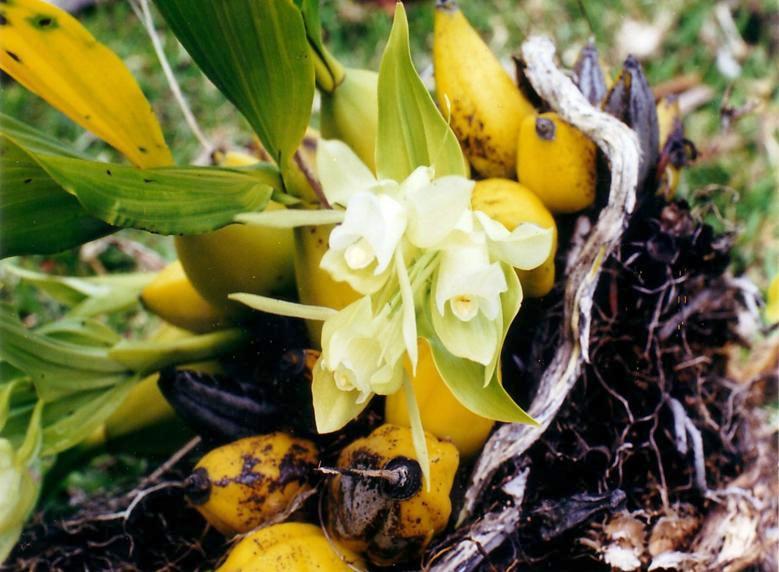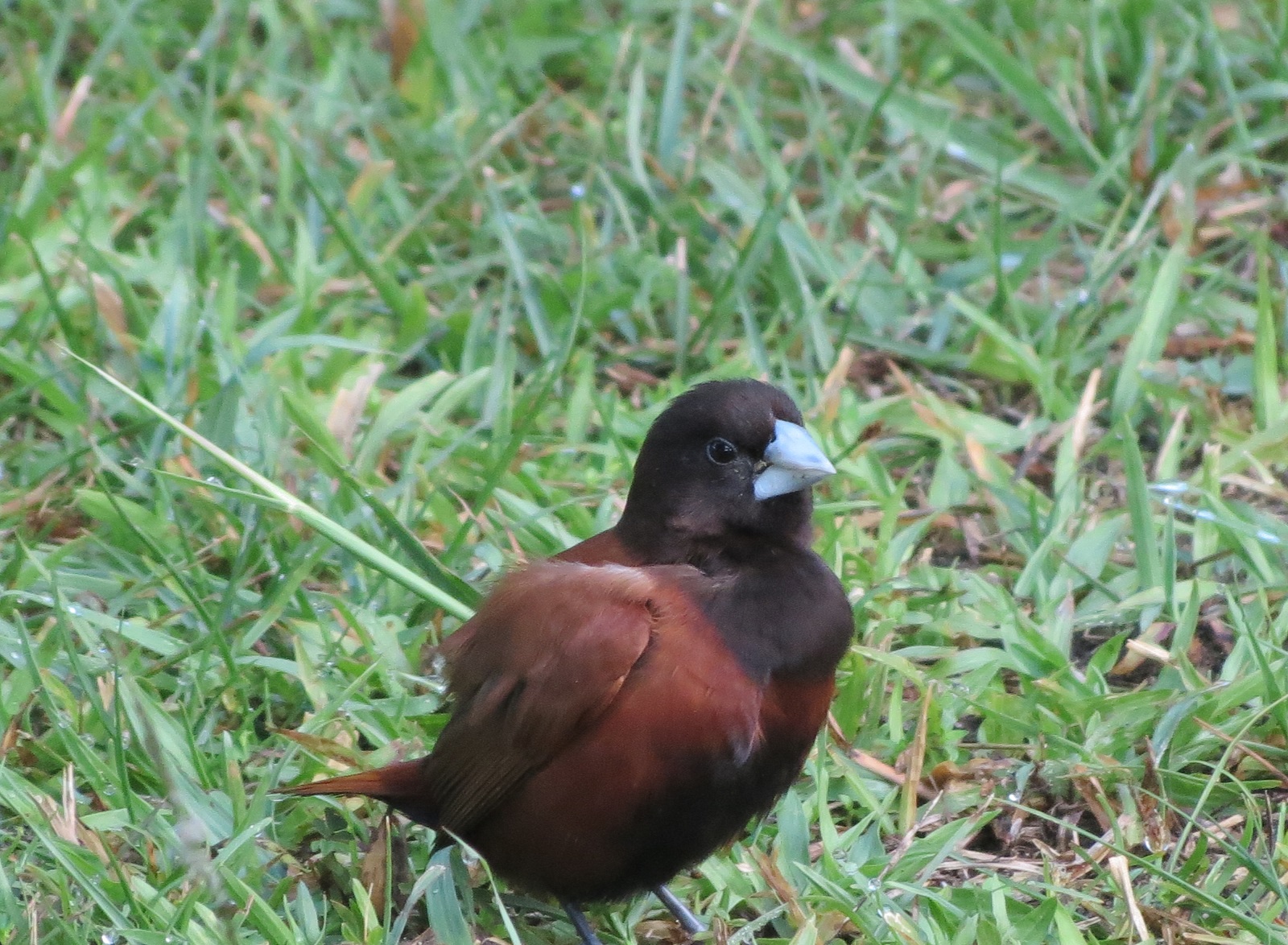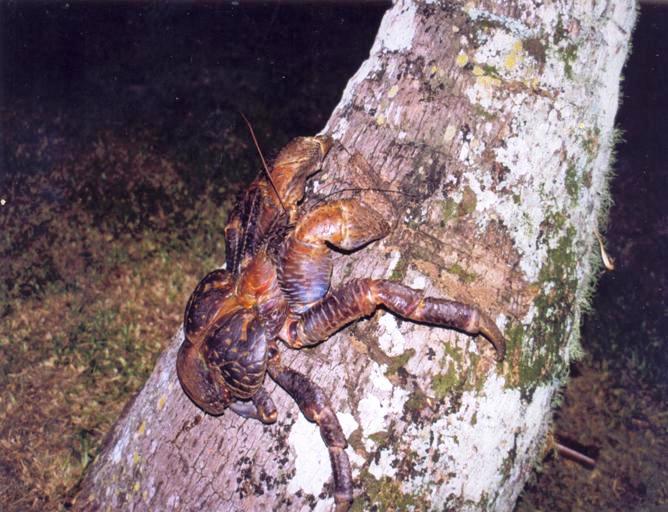The variety of plants and animals found in Vanuatu is called its biodiversity. The term biodiversity refers to all the different plants, animals and micro-organisms, their genetic variation, and the ecosystems they are part of.
Over thousands of years ago, our islands in Vanuatu have been colonized with so many different kinds of plants, birds and other animals that we can still see many today.
Especially in the past, our people have depended entirely upon these plants and animals for their food, medicine, transport and many other uses.
Today, with the fast growing of our population and the need to increase in agriculture and other economic development through the exploitation of these natural resources, it has resulted in the decline in the population of many of our plants and animal species.
Some of these species have become highly threatened because of their high demand and usage. Some of them have become endangered species and close to extinction. There are also some endemic species that need a lot of protection.
The destruction of forest, freshwater, mangrove and other types of ecosystems contribute a lot to the decline in the abundance and distribution of these species.
How Rich is Vanuatu's Biodiversity?
Biologically speaking, the biodiversity our islands are not that rich compared to our neighbouring countries like New Caledonia, Solomon Islands, Fiji and Papua New Guinea. This means these countries have a high level of biodiversity and endemism than what we have on our islands. Overall richness and endemism in Vanuatu range from low to moderate.
This is because geologically our islands in Vanuatu are younger and are smaller in size and are isolated from large landmasses.
In general larger and older islands support both a greater diversity of terrestrial ecosystems, plants and animals.
However both the sea separating islands and the rugged interiors separating catchments and lowland habitats are barriers to many species, providing conditions that have favoured relatively rapid subspeciation and speciation.
Frequent disturbance due to the passage of tropical cyclones or volcanic activity has also had a profound effect on the distribution and abundance of species, especially on smaller islands.
Consequently, there is a considerable distribution variation of species within and between islands, and Vanuatu's biodiversity is of particular interest for its on-going processes of immigration, range extension and contraction, and subspeciation.
What are the Origins of Vanuatu's Biodiversity?
Vanuatu's flora is thought to be more closely allied with that of Solomon Islands to the North, with some elements from Fiji, and very few from Australia or New Caledonia .
However, there is considerable variation between different plant families.
For example 59% of palm genera are shared with Fiji with a much lower proportion affiliated with palms in Solomon Islands.
Similarly the fauna demonstrates closer affinities with Solomon Islands.
Internally there is a biogeographic divide with islands to the north of Efate demonstrating significant differences to the islands to the south.
Vanuatu's reef ecosystems support similar species to Australia's Great Barrier Reef and New Caledonia.
In general Vanuatu's biodiversity remains poorly known, with detailed studies of only a few genera and few studies of the biota of smaller or less accessible islands.
How is Vanuatu's Biodiversity Faring?
From the information that is available, the nation's biodiversity is relatively intact and perhaps better preserved than in most countries in the Pacific. However, many species are in decline. A few plants and animals that have been studied in detail (such as orchids, palms, lizards and flying foxes) show that a significant number of endemic species are found on some of our islands.
Although at present there are only two known endemic genera being the endangered palm Carpoxylun macrospermum and the flycatcher Neolalage banksiana.
Two species of giant clam appear to have become extinct in most of their range in Vanuatu. 'Namalau' (Megapodes) are rare in heavily populated areas but remain common in remote locations. The coconut crab is rare in many areas and populations of several over-exploited marine resources are locally at risk.
Populations of black flying fox have declined in many of our islands. Overcollecting or hunting is a common cause for the decline of many of the species, but so too is the degradation of habitats. Without proper management these natural resources could further decline, or become extinct as has happened elsewhere in the Pacific region.
What are the Threats to Vanuatu's Biodiversity?
Some of the threats that are impacting upon the status of biodiversity are:
Over-exploitation - Many of our plants and animal resources are being overexploited thus causing a decline in the abundance and distribution of species. Examples are coconut crabs (Birgus latro), green snail (Turbo marmoratus), trochus shells (Trochus niloticus) and lobsters (Panulirus spp.). Plants such as kava (Piper methysticum), sandlewood (Santalum austrocaledonicum), white wood (Endospermum medullosum) and the melektree (Antiarus toxicana) are experiencing a decline as well.
Destruction of rainforest - Every year rainforest is cleared mainly for agriculture and other developments is a becoming a high threat to loss of biodiversity. New development practices are leading to the degradation of some ecosystems but more disturbing is the countrywide declining respect for traditional resource management systems and traditional authority structures.
Destruction of freshwater habitats - This has become an issue in some islands where habitats have been degraded and diversity is much reduced. This happens as a result of over-exploitation of freshwater species, clearing of vegetation including water catchments areas.
Introduction of invasive species - These species have become a common threat to the environment. Although the Biosecurity Department is acting as a watchdog today, most of these invasive species have been imported into the country in the past. Some of them are:
-
Some vines imported during World War are now a source of concern for many of the islands. Mile a minute (Mikania sp.) and American rope (Merremia sp.) are suppressing regrowth of tree forests and can cause loss of wildlife. The Quarantine Department and Vanuatu Environment Unit are ensuring that these vines are not transported to newer grounds within Vanuatu.
-
Water hyacinth (Eichhornia sp.) is under scrutiny from the Quarantine which is considering introducing a beetle for biological control. It is effectively invading freshwater streams and lakes.
-
Some grass and many trees and shrubs are invasive as well and now taking over prime agricultural land.
-
Some introduced animals can be very destructive as well for the environment. Feral pigs are causing trouble for communities in Port Olry (santo) area and are damaging natural environment elsewhere. Rats cause considerable damage to agricultural crops (such as cocoa and coconuts) and can be a threat to local bird population.
-
Most threatening is a tiny ant, called the fire ant (Wasmania Auropunctata). Probably introduced in the Solomon Islands it is now present the Banks Islands (Vanualava and Motalava). Native to tropical America this ant gives a horrible sting to people and can cause blindness/death to large animals such as birds. An eradication campaign needs to be organized before this ant reaches other islands of Vanuatu and becomes an economic burden: gardening can become an extremely painful activity, and plants may also become affected by this ant.
-
The African snail (Euglandina fulica) has been a pest but has been controlled since the introduction of its natural predator (Euglandina rosea). This snail however has been feeding on other native snails some of which were endemic.
-
Another common invasive species is the Indian Mynah Bird (Acridothere tritis). Native to India this bird is highly successful in competing with native birds and taking over their habitat by destroying their eggs and nests. In places where this bird is established other birds are rarely seen.
-
Another threat to Vanuatu's biodiversity are Cyclonic Events. Vanuatu usually gets hit by a cyclone during the wet season from November to April. According to past experiences, some of these cyclones were very devastating to the natural environment therefore has also contributed to the reduction in the population of many species.




